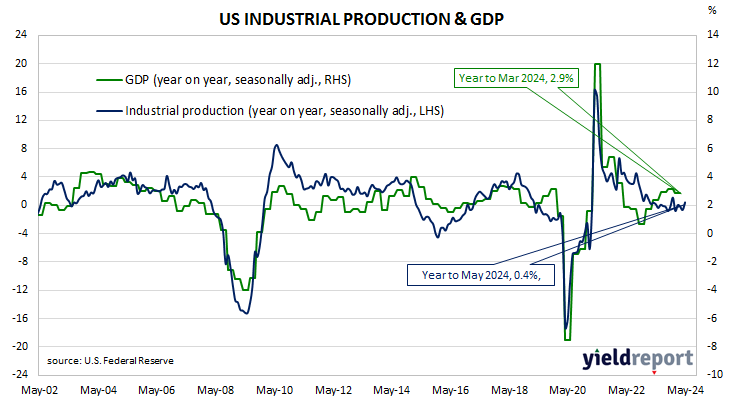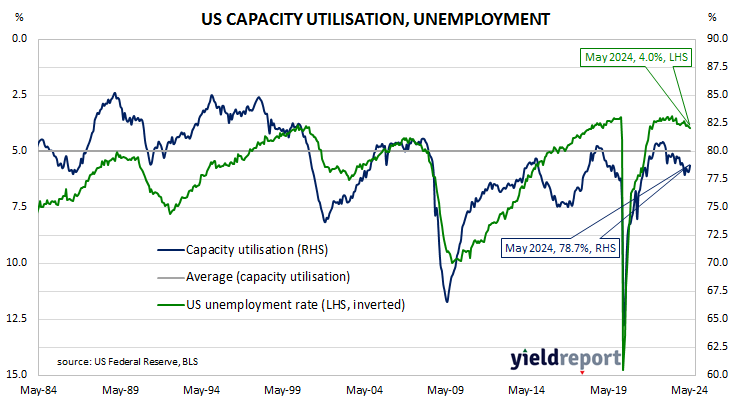Summary: US industrial output up 0.9% in May, greater than expected; up 0.4% over past 12 months; US Treasury yields fall; rate-cut expectations firm; capacity utilisation rate jumps to 78.7%.
The Federal Reserve’s industrial production (IP) index measures real output from manufacturing, mining, electricity and gas company facilities located in the United States. These sectors are thought to be sensitive to consumer demand and so some leading indicators of GDP use industrial production figures as a component. US production collapsed through March and April of 2020 before recovering the ground lost over the fifteen months to July 2021. However, production levels has largely stagnated since early 2022.
According to the Federal Reserve, US industrial production rose by 0.9% on a seasonally adjusted basis in May. The result was considerably greater than the 0.4% increase which had been generally expected as well as April’s unchanged figure. On an annual basis the growth rate moved back into positive territory, rising from April’s downwardly revised figure of -0.7% to 0.4%.
The figures came out the same morning as the latest US retail sales numbers and US Treasury bond yields fell moderately across the curve on the day. By the close of business, the 2-year Treasury yield had lost 5bps to 4.72%, the 10-year yield had shed 6bps to 4.22% while the 30-year yield finished 5bps lower at 4.36%.
In terms of US Fed policy, expectations of a lower federal funds rate in the next 12 months firmed, with at least four 25bp cuts currently factored in. At the close of business, contracts implied the effective federal funds rate would average 5.30% in August, 3bps less than the current spot rate, 5.24% in September and 5.075% in November. June 2025 contracts implied 4.315%, 102bps less than the current rate.
The same report includes capacity utilisation figures which are generally accepted as an indicator of future investment expenditure and/or inflationary pressures. Capacity usage hit a high for the last business cycle in early 2019 before it began a downtrend which ended with April 2020’s multi-decade low of 64.2%. May’s reading jumped by 0.5 percentage points after revisions to 78.7%, 1.4 percentage points below the long-term average.
While the US utilisation rate’s correlation with the US jobless rate is solid, it is not as high as the comparable correlation in Australia.



